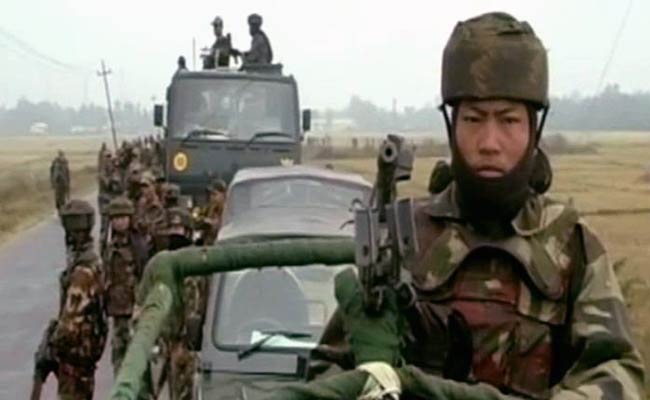
In 2013, a Supreme Court-appointed commission of inquiry found six encounters to be fake
Imphal: In an overgrown field outside Manipur's capital, Basanta Nameirakpam points to the spot where his son, Nobo, lies buried. The 27-year-old was killed in an encounter by a joint team of Manipur police commandos and Assam Rifles in April, 2009. His cousin, Gobind, was also shot dead that evening. Ordinarily the two men would have been cremated, but they have been buried should the need arise to exhume their bodies, as proof against their killers.
In March 2013, a Supreme Court-appointed commission of inquiry found six encounters, including Gobind and Nobo's, to be fake. Its report, authored by Justice Santosh Hegde, noted that the incidents were "egregious examples of AFSPA's (Armed Forces Special Powers Act) gross abuse" in the state. The Court was acting on a petition filed in 2012 by the families of encounter victims and a Manipur-based human rights group.
During the inquiry, it was found that the security forces had acted on unreliable intelligence, if any, and the weapons seized appeared to be planted. There was no proof that Gobind and Nobo had ever been militants. Claims about retaliatory firing were also debunked. The two men were fired at 89 times, 16 of which hit Gobind alone, in breach of the court's guidelines on the use of force by the Indian Army.
"All the six encounters were actually out and out murder," Hegde told NDTV. "This was only a facade to show that it was an encounter."
In Manipur's bloody history, such unequivocal indictments of the armed forces have been rare. But, even attempts to probe the army's excesses have been denied. The Hegde commission could only learn that of the 66 complaints of human rights violations against the army since 2007, only 3 had been disposed of. The status of those cases wasn't revealed. Manipur Home Secretary, Suresh Babu, couldn't remember a single instance when the state had sought the union government's sanction to prosecute army jawans, as prescribed under AFSPA.
These circumstances, some say, have only perpetuated a culture of impunity, giving rise to fresh violence. "If you want to deal with the militancy, ensure that democratic institutions function," said Babloo Loitongbam, director of Human Rights Alert. "That is the core of people's anger."
In December 2014, two important court judgements further acknowledged that encounter killings were a reality in the state. The first was in the case of the Malom massacre in November 2000, which saw 10 people killed by soldiers from the 8th Assam Rifles. After an explosive was set off near their convoy, the Riflemen had gunned down bystanders at a bus stop outside Imphal town. Massive unrest followed, giving birth to Manipur's best known voice against AFSPA, Irom Sharmila. A recent judgement by the Manipur High Court disproved the army's claims that they'd been fired upon and ordered compensation of Rs. 5 lakhs to each of the victim's families.
The second was the Supreme Court's order of compensation to the family of Thangjam Manorama. On a night in July 2004, Manorama had been dragged out of her home in Imphal East district and killed by a team from the 17th Assam Rifles. Upendra Singh, who led an inquiry immediately after the incident, accused the soldiers of brutally killing her in a fake encounter.
The probe itself, Singh told us, had been repeatedly stonewalled by the armed forces and the state. The Assam Rifles didn't reveal the names of the officers who conducted the operation. His summons, too, got no reply at first. "They appeared only after I issued warrant for arrest," Singh told NDTV. His report, submitted a few months later, was only made public last November, a decade after the killing.
Repeated attempts to get the Assam Rifles to comment were unsuccessful. A source in the unit told us that they have internal processes to ensure action against such violations. But, he did not specify if there was any in these cases, or what that action could entail.
The court verdicts have been met with both relief and bitterness in Manipur. Victims's families are disappointed that neither judgements speak of prosecuting the guilty army personnel.
Our source in the Assam Rifles also claimed that extrajudicial killings are an exception, but this remains contested in the absence of credible data. Activists allege over 1500 such killings since the 1970s, but the Supreme Court could only investigate 6 and the Manipur government has rejected the longer list.
Last year, insurgency related deaths in the state had reduced to 48, from 485 in 2008. This has been attributed to the courts' pronouncements on Malom and Manorama. Suresh Babu, the Home Secretary, said that the verdicts have also created an environment for insurgents to come back. After six decades of violent conflict, which has killed thousands, this relative peace could easily be shattered and the pleas for justice, if unaddressed, are potentially explosive.







0 comments:
Post a Comment